Elephant Toothpaste anyone? Although elephants might not be too excited about the idea, your kids will be thrilled with the fun chemical reaction of this super simple science experiment.
With only a few common items that you probably already have at home, kids can see the quick and impressive results of the chemical reaction, feel the heat released from the process, and even play with the “elephant toothpaste” foam afterward.
Below you’ll find detailed and printable instructions, a materials list, a demonstration video, and an easy to understand explanation of why it works!
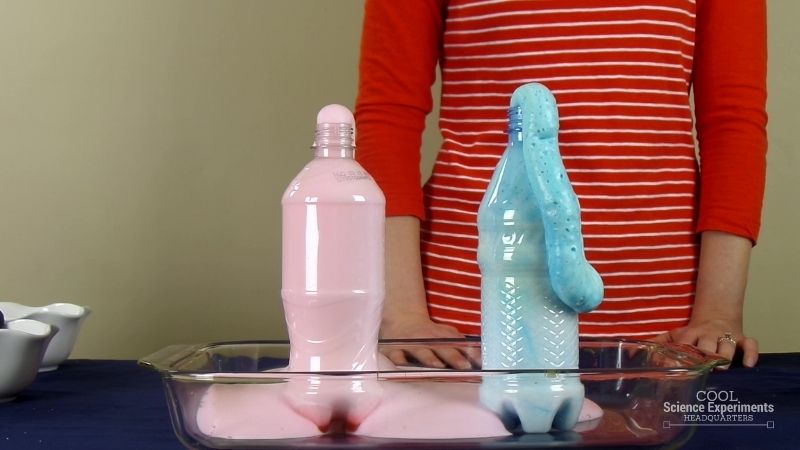
JUMP TO SECTION: Instructions | Video Tutorial | How it Works
Supplies Needed
- 2 Tablespoons Warm Water
- 1 Teaspoon Yeast
- Food Coloring
- Hydrogen Peroxide – Either 3% or 6%
- Dish Soap
- Empty Plastic Bottle
- Funnel
Helpful Tip: You can find the 3% at most stores, but you will need to either go to a Beauty Supply Store or order the 6% online. In the video I perform the experiment two ways. Once using the 3% peroxide and once using the 6%. It is often recommended to use 6% peroxide, but we actually preferred the reaction that happened with the 3% better.
Elephant Toothpaste Science Lab Kit – Only $5
Use our easy Elephant Toothpaste Science Lab Kit to grab your students’ attention without the stress of planning!
It’s everything you need to make science easy for teachers and fun for students — using inexpensive materials you probably already have in your storage closet!
Elephant Toothpaste Experiment Instructions
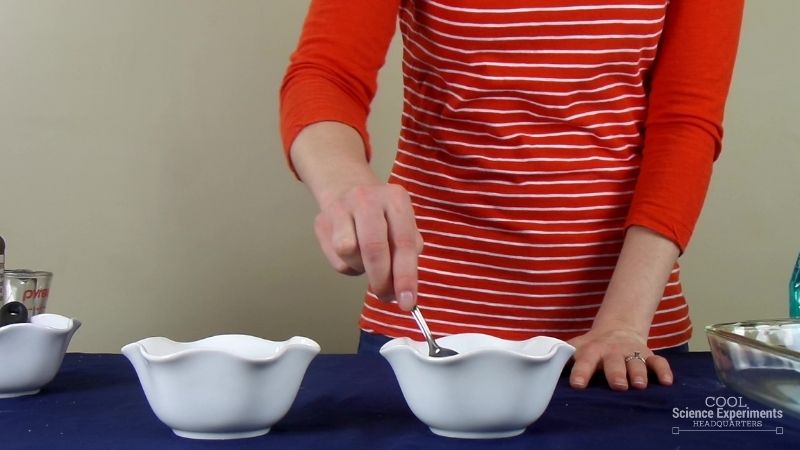
Step 1 – Combine two tablespoons of warm water with one teaspoon of yeast and mix until the yeast is completely dissolved in the water.
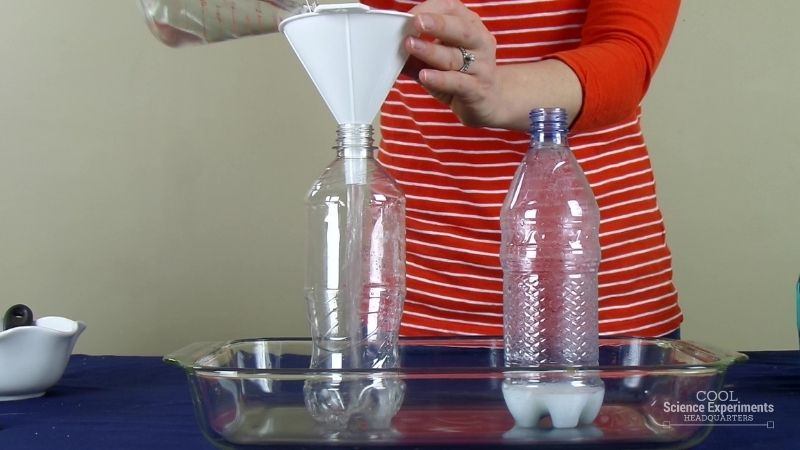
Step 2 – Pour 1/2 cup hydrogen peroxide into the empty bottle. You’ll see here that we have two bottles. The bottle pictured on the left is being filled with 3% hydrogen peroxide while the bottle pictured on the right is filled with 6% hydrogen peroxide.

Step 3 – Add a few drops of food coloring into the bottle. Take a moment to make a few observations. What happened when you added the drops of food coloring?
Note: This step is optional, but adding the color adds a fun element to the experiment. You’ll see that we used a different color of food coloring for each bottle.
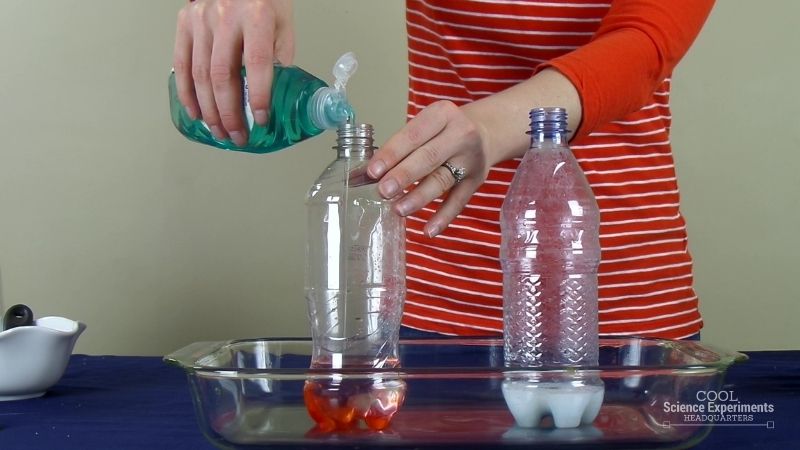
Step 4 – Next, add a squirt of dish soap into the bottle. Again, take a moment observe what happened. Did adding the dish soap appear to have any effect on the liquid already in the bottle?

Step 5 – Finally, pour the mixture of water and yeast into the bottle. Watch carefully and observe what happens.
Helpful Tip: You may need to gently swirl the bottle in order to get the items to completely combine. We had to do that for the 6% hydrogen peroxide.

Sit back and watch what happens. Write down your observations as you watch the experiment. Can you describe what happens when you add the water and yeast mixture to the bottle. If you are using both the 3% and the 6% hydrogen peroxide like we are, is there a difference between what happens?
Wondering what caused the liquid to react that way? Find out the answer in the how does this experiment work section below.
Video Tutorial
Watch the Elephant Toothpaste Science Experiment Step by Step Instructions Video
How Does the Elephant Toothpaste Science Experiment Work
This experiment shows a very impressive and fast chemical reaction! Hydrogen peroxide is a combination of hydrogen and oxygen (H2O2). In this experiment, yeast is a catalyst that helps release oxygen molecules from the hydrogen peroxide solution.
A catalyst is a material that increases the rate of a reaction without itself being consumed
The release of oxygen molecules in this experiment happens FAST! The foam created in this chemical reaction is made up of very tiny oxygen bubbles. These bubbles result when hydrogen peroxide (H2O2) is broken down by the yeast into water (H2O) and oxygen (O2).
During the reaction, feel the bottle. It will feel warm to the touch because it is an exothermic reaction.
An exothermic reaction is a chemical reaction that releases energy through light or heat (in this case, heat).
The reaction will continue and foam will be produced until all of the hydrogen peroxide (H2O2) has been broken down into water (H2O) and oxygen (O2).
**Have fun playing with the foam after the experiment is over! It is safe to touch because all that foam is just soap, water and oxygen. Let your kids have some fun with the foam too. Just be sure to have a towel handy!
Elephant Toothpaste Science Lab Kit – Only $5
Use our easy Elephant Toothpaste Science Lab Kit to grab your students’ attention without the stress of planning!
It’s everything you need to make science easy for teachers and fun for students — using inexpensive materials you probably already have in your storage closet!
Other Ideas to Try
Try adding more or less yeast when doing the experiment again. How does this affect the amount of foam produced?
Try the experiment again, but change the size of the bottle. How does this affect the amount of foam produced?
I hope you enjoyed the experiment. Here are some printable instructions:
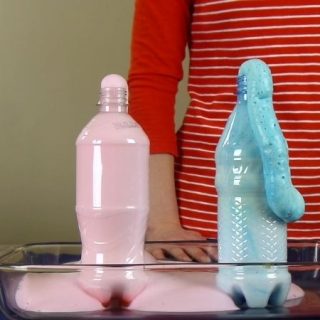
Elephant Toothpaste Science Experiment
Materials
- 2 Tablespoons Warm Water
- 1 Teaspoon Yeast
- Food Coloring
- Hydrogen Peroxide – Either 3% or 6%
- Dish Soap
- Empty Plastic Bottle
- Funnel
Instructions
- Combine two tablespoons of warm water with one teaspoon of yeast and mix until the yeast is completely dissolved in the water.
- Pour 1/2 cup hydrogen peroxide into the empty bottle
- Add a few drops of food coloring into the bottle
- Add a squirt of dish soap into the bottle
- Pour the mixture of water & yeast into the bottle
- Sit back and watch what happens

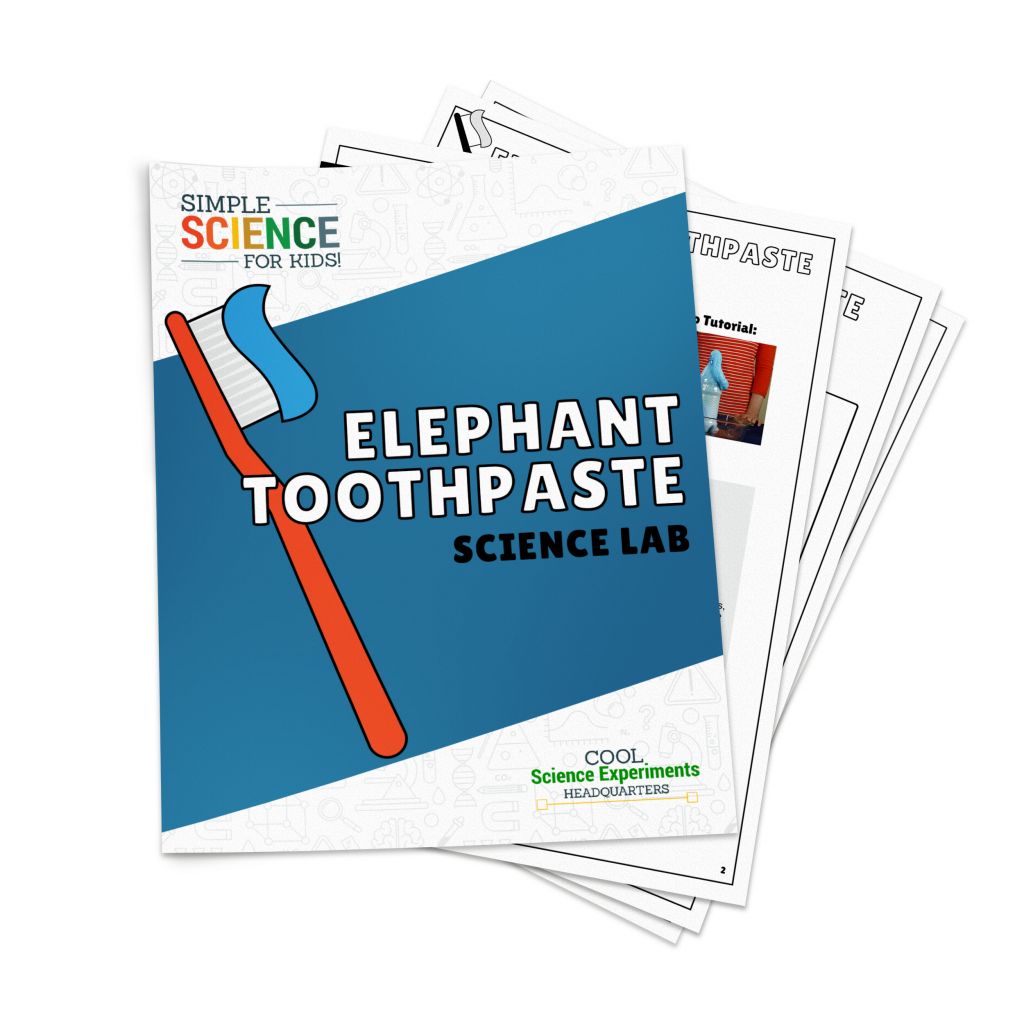

do it was a cemical reacin
Correct! The yeast is mixed with the hydrogen peroxide causes a chemical reaction.
Which version did you like better, the one that reacted fast or the one that reacted slow?
Danielle
Looks amazing!
What is the chemical reaction?
I’m am going to do that science project and this was super helpful thanks so much
Thank you so much I am doing this science project and I don’t know what to do and now I know what to do j
Did you try using more yeast or more 3 % hydrogen peroxide?
Found this explanation: “The yeast acted as a catalyst; a catalyst is used to speed up a reaction. It quickly broke apart the oxygen from the hydrogen peroxide. Because it did this very fast, it created lots and lots of bubbles. Did you notice the bottle got warm. Your experiment created a reaction called an Exothermic Reaction – that means it not only created foam, it created heat! The foam produced is just water, soap, and oxygen ”
The yeast is not reacting with the hydrogen peroxide. Rather it is acting as a catalyst. A catalyst is a substance that causes a chemical reaction to speed up but is not “used” up during the reaction.
Hydrogen Peroxide: H2O2 hydrogen and oxygen
Baker’s Yeast: C19H14O2 carbon, hydrogen and oxygen
My son did this experiment which was great! The only problem was that he played with the foam afterwards and his hands got super itchy. Can you be allergic to the yeast? Just a warning in case this happens to anyone else.
Yeah I did this with potassium iodide and 25% hydrogen peroxide in a lab and my fingers went a little white on the tips (I had gloves on after this happened) they did get itchy and I think it was just the hydrogen peroxide bleaching the skin. This is an exothermic reaction so it can get hot not sure how hot with yeast.
It did not work for me and i don’t know why maybe caused i used rubbing alcohol insted
good helpful and fun